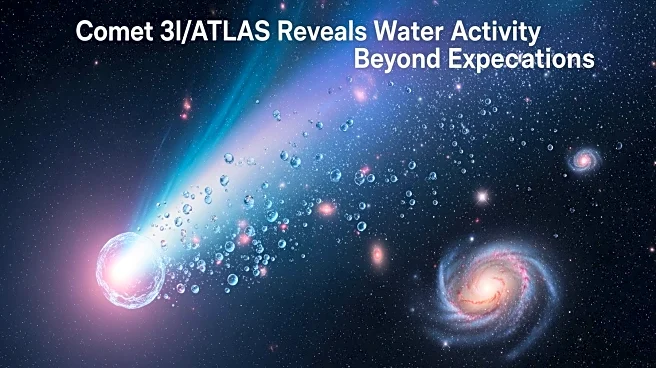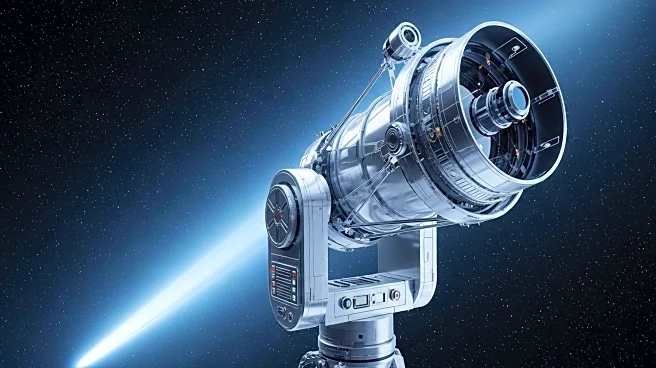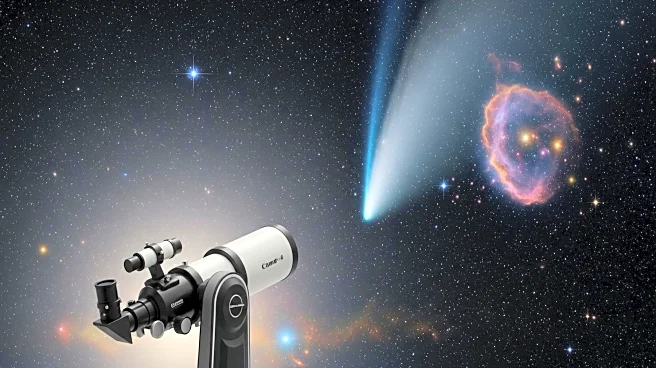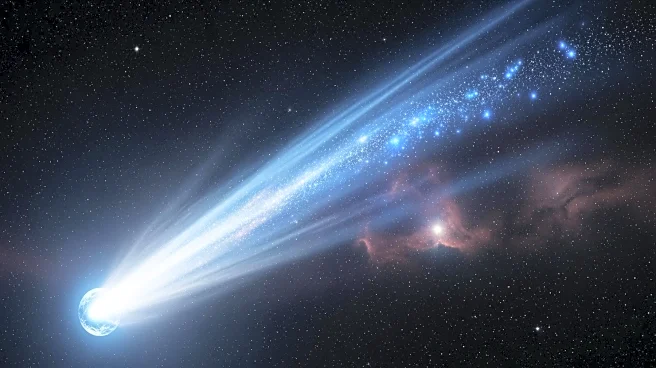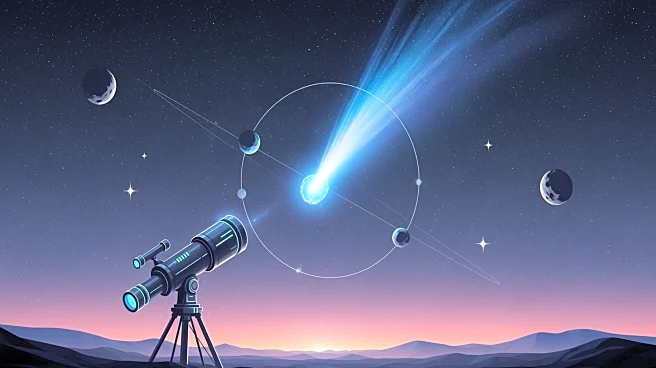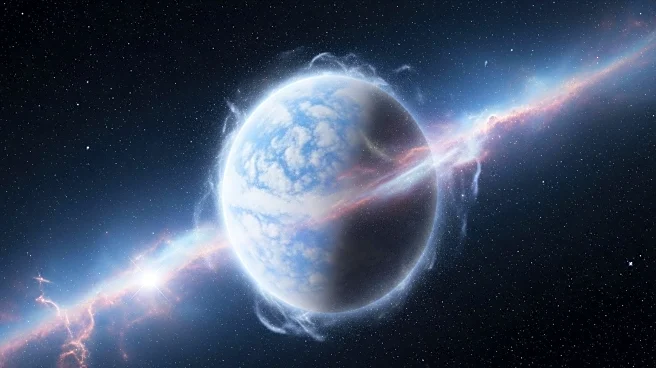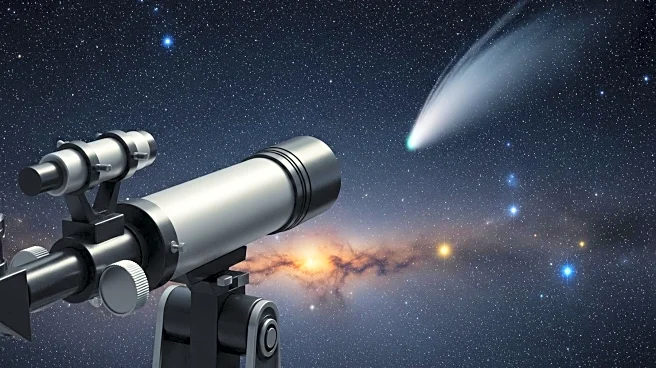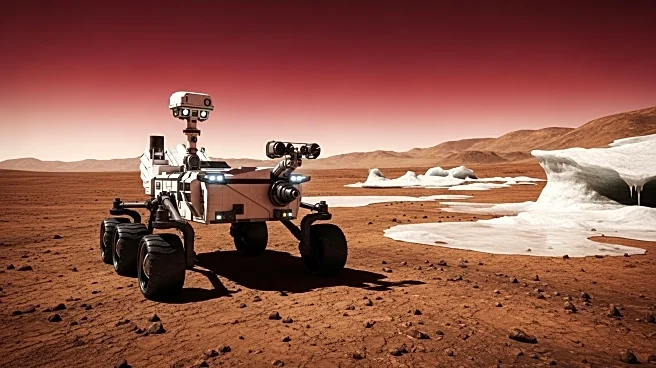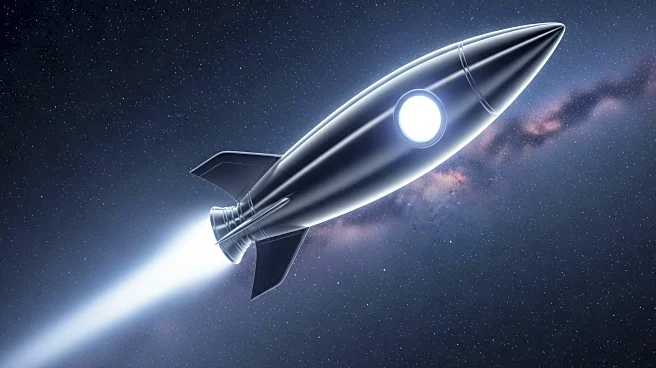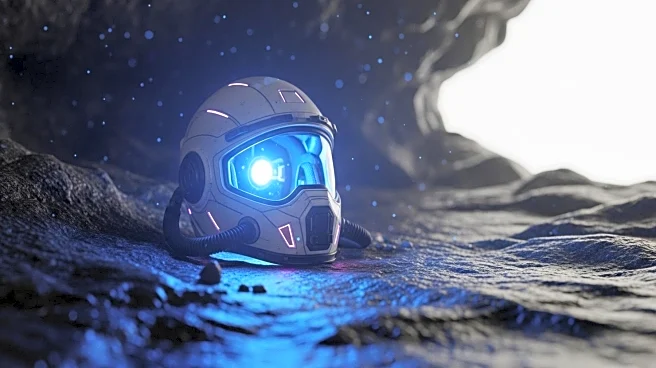What's Happening?
Comet 3I/ATLAS, the third known interstellar visitor, is actively releasing water vapor much farther from the Sun than expected. Auburn University scientists, led by Zexi Xing, detected hydroxyl gas, a byproduct
of water vapor, using NASA's Neil Gehrels Swift Observatory. This discovery provides a new glimpse into the chemistry of distant star systems and offers a point of reference for comparing interstellar comets to those in our solar system.
Why It's Important?
The detection of water vapor from 3I/ATLAS is significant as it enhances understanding of exoplanetary system chemistry and the conditions necessary for comet activity. This discovery challenges existing theories about comet formation and sublimation processes, suggesting complex structures for interstellar visitors. Understanding these processes could provide insights into the formation of planetary systems and the potential for life-supporting environments.
What's Next?
Further studies are likely to focus on analyzing the chemical composition of 3I/ATLAS and comparing it to other interstellar objects. Researchers may explore the mechanisms behind its water outgassing and the implications for comet formation theories. This could lead to a broader understanding of the conditions necessary for comet activity and the potential for discovering habitable environments beyond our solar system.
Beyond the Headlines
The discovery of water activity in 3I/ATLAS could prompt a reevaluation of existing models of comet formation and the role of interstellar objects in delivering essential compounds to developing planetary systems. This finding may influence the search for life beyond Earth by highlighting the importance of interstellar visitors in creating habitable conditions.
